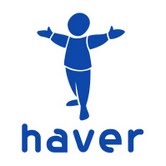Mint maradt magánosan a város, a népben bővelkedő! Olyan lett, mint özvegy; aki nagy volt a nemzetek közt, úrnő az országok közt, robotolóvá lett!
(Ekhá 1:1:)
vö.
Yossi Gamzu: The Kotel
A girl stood facing the Kotel (western wall)
She drew her lips and chin close to it.
She said to me, the shofar's blasts are strong
But the silence is even stronger.
She told me: Zion, the Temple Mount**
She was silent, about the reward and the right.
And what shone on her forehead at evening
Was the purple of royalty.
The kotel, moss and sadness.
The kotel, lead and blood.
There are people with a heart of stone.
There are stones with a human heart.
The paratrooper stood at the kotel.
Of his whole division - the only one.
He told me that death has no image
But it has a diameter -
Nine millimeters only.
He told me, I'm not shedding tears
And again lowered his glance.
But my grandfather, God knows,
Is buried here, on Har Hazeitim (the Mount of Olives) ***.
The kotel, moss and sadness.
The kotel, lead and blood.
There are people with a heart of stone.
There are stones with a human heart.
She stood, dressed in black, at the kotel.
The mother of one of the infantry soldiers.
She told me, it's the eyes of my son that are shining
And not the candles on the wall.
She told me: I'm not writing
Any note to hide between the cracks.***
Because what I gave to the kotel only last night
Is greater than any words or writing.
The kotel, moss and sadness.
The kotel, lead and blood.
There are people with a heart of stone.
There are stones with a human heart.
* The kotel is the last surviving part of ancient Israel's temple (Beit Hamikdash), one of its surrounding walls. A holy site symbolic of Judaism and Jewish sovereignty, Jews have visited it to pray for centuries. After Israel became independent in 1948 and until the Six Day War in '67, the West Bank was owned by Jordan, and the Kotel, Temple Mount, Mt. of Olives cemetery and holy Jewish sites in East Jerusalem and the West Bank were inaccessible to Jews. The song commemorates the soldiers who died fighting in 1967 to regain all of Jerusalem.
** The Temple Mount (Har Habayit) is the site where the temple stood. It is also a sacred site for Islam. Two mosques are there today: The Dome of the Rock (Mosque of Omar) and El Aksa Mosque.
*** The Mount of Olives is a traditional burial site, facing one of the Gates of Jerusalem (the idea is that when the Messiah comes and the dead arise, they will be able to be the first to enter).
**** There is a tradition of putting notes in the cracks, as a prayer for God's help.
Forrás: http://www.haza.co.il/eng/song.asp?id=217




Ajánlott bejegyzések:
A bejegyzés trackback címe:
Kommentek:
A hozzászólások a vonatkozó jogszabályok értelmében felhasználói tartalomnak minősülnek, értük a szolgáltatás technikai üzemeltetője semmilyen felelősséget nem vállal, azokat nem ellenőrzi. Kifogás esetén forduljon a blog szerkesztőjéhez. Részletek a Felhasználási feltételekben és az adatvédelmi tájékoztatóban.